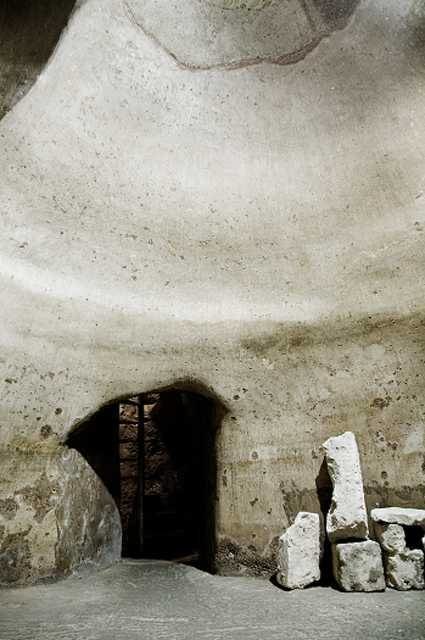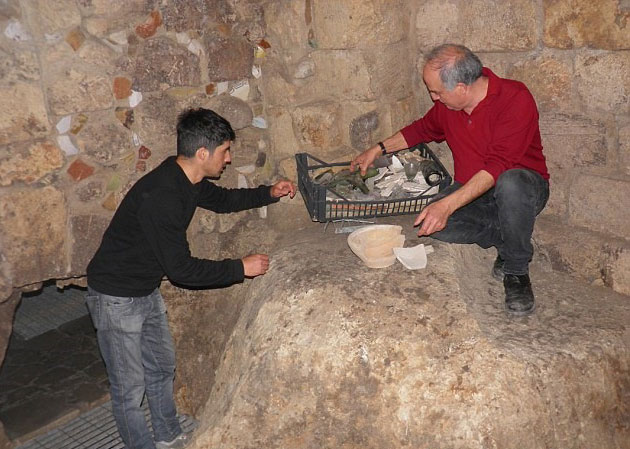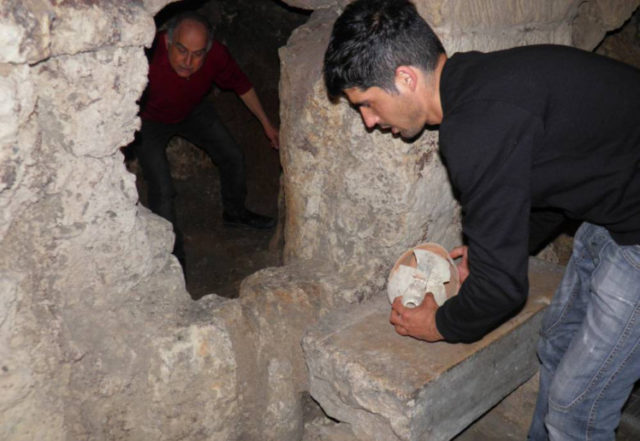Lucian Faggiano of Lecce, Puglia had a dream to open a trattoria. A trattoria is an Italian eatery that is not quite a restaurant, but more than a fast food type drive through.
Faggiano purchased a building at 56 Via Ascanio Grandi and immediately began renovations. In order to repair a blocked toilet, he and his sons decided the most efficient way was to dig a trench. Faggiano expected the project would take about a week to complete.

This was over eight years ago. Faggiano has still not been able to open his trattoria due to the remarkable discoveries found in his quest to repair the plumbing.
In a bid to stop the sewage backing up, Mr Faggiano, 60, and his two sons dug a trench and instead of isolating the offending pipe found underground corridors and rooms beneath the property on 56 Via Ascanio Grandi, The New York Times reported.
Lecce is located in the heel of Italy’s southern peninsula. It is reported to have been founded by the Messapii of Greek origin, who lived during the time of the Trojan wars.

At that time the name of the town was Sybar. The Romans, in their ever-expanding empire, took over the city in about 300 BCE. At that time they renamed the city Lupiae, which eventually evolved into Lecce.
Hadrian had the city moved about two miles to the northeast in order to construct an amphitheater that would connect to Hadrian’s port (currently San Cataldo).
After the Romans fell from power Lecce was invaded by King Totila during the Gothic Wars. Romans recaptured the city in about 549, and it remained under Roman rule for five hundred years.
Around the 11th century AD, Lecce was taken over by the Normans and became commercially important due to its location near the trade routes. In 1463 the city was annexed by Charles V, the Holy Roman Emperor, and walls were built to keep out Ottoman invaders.
In 1656 Lecce was overrun by the plague, killing thousands across the city. More recently, the city was opened up to allow an Allied base during WWII.
As Mr. Faggiano and his sons were digging the trench to find the toilet plumbing they suddenly found an ancient stone floor covering a Messapian burial tomb.

Following downward through cracks and holes, the family also discovered a Roman grain storage room and remains of a Franciscan convent.
Faggiano kept his discoveries secret, even from his wife, in fear that any problems would delay the completion of his trattoria.
Investigators did discover the amateur work being done and informed Faggiano that without officials recording the contents of the site he must cease work.
A year later the proper officials had been put into place, and the digging resumed.
Giovanni Giangreco, one of the officials assigned to the dig, remarked, “The Faggiano house has layers that are representative of almost all of the city’s history.
From the Messapians to the Romans, from the medieval to the Byzantine time.”
Roman pottery, jewelry, and even wall carvings believed to be the work of the Knights Templar have been found.
The family was interested in the layers of history beneath the building, but they were expected to come up with the costs for the dig.
They were able to rent out some of the rooms to keep financially stable, but the pressure of the situation caused Faggiano to almost give up.

Instead, they turned the building into Museum Faggiano, and installed staircases to allow visitors access to the many layers of ancient civilization.
Here is another interesting read from us:Ancient tombs reveal stunning treasures
Faggiano still intends to open his trattoria, but wants to find a location without quite so much history attached. He and his sons did eventually find the plumbing problem, which was repaired before the museum opened its doors to the public.